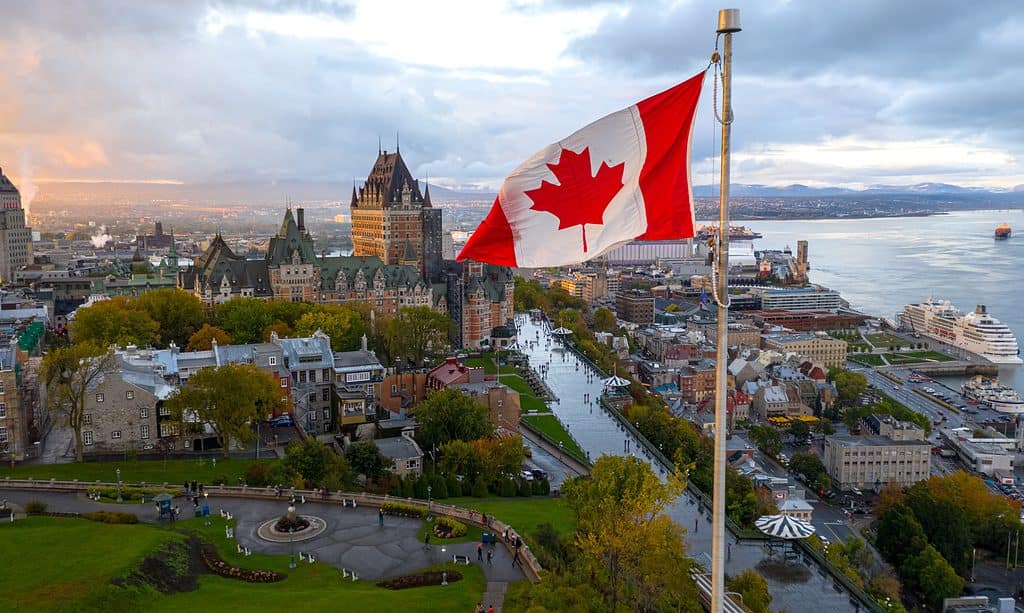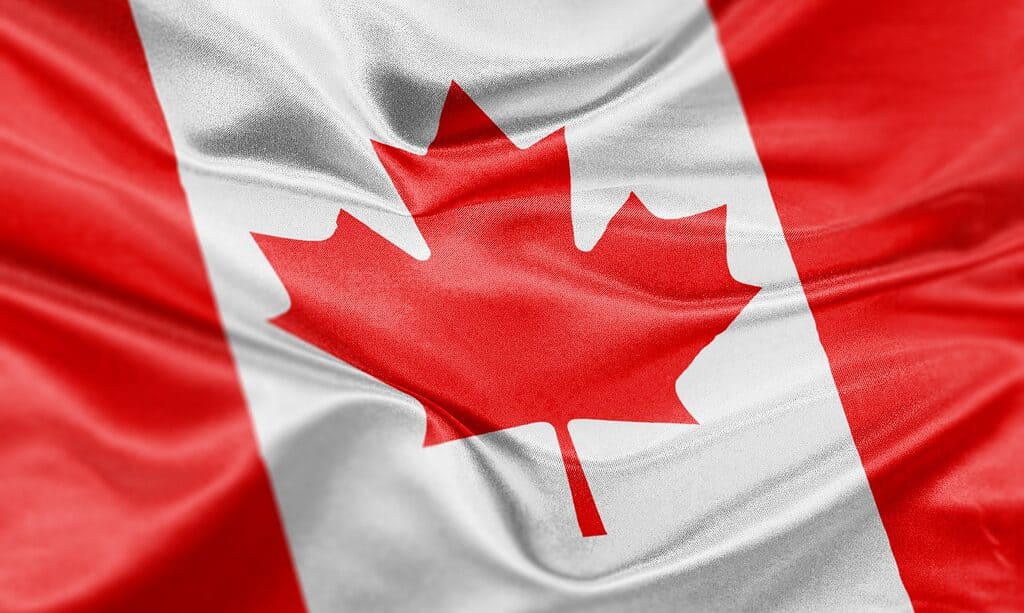When looking through a collection of the different flags of the world, you’ll notice remarkable similarities among some groups of flags, like the flags of New Zealand and Australia, or Chad and Romania, for instance. Other flags use similar color palettes, such as Indonesia vis a vis Monaco, or UAE, Kuwait, Palestine, Jordan, Moldova, and Iraq. But when browsing through these flags, you’ll definitely come upon unique ones. One of these is the Canadian flag.
Adorned with the country’s most famous emblem, you’ll never mistake the flag of Canada for the flag of any other country! The maple leaf is the most prominent symbol of Canada as a country, and the region is also well-known for its maple syrup. 85% of the maple syrup consumed worldwide is manufactured in Canada. The region has the ideal combination of cool spring nights and mild daytime temperatures to create an abundance of the clear-colored sap necessary to manufacture maple syrup. So, it’s no question that the country’s flag screams the very symbol it is known for. But what is the history behind the flag of Canada? And what does each color and symbol mean? Find out below!
Introduction to the Canadian Flag

The Canadian flag features a red field with a white square in its middle in which a stylized, red, 11-pointed maple leaf is charged in the center.
©iStock.com/Gabriel Shakour
The Canadian national flag, with a 1:2:1 ratio, has a red field with a white square in the middle, and a stylized red, 11-pointed maple leaf emblazoned in the middle. The Canadian flag has emerged as the country’s primary and most iconic symbol. It is the first flag to have been approved by both Houses of Parliament and declared the official national flag of Canada by the monarch.
Since the 1860s, the Canadian Red Ensign has been flown informally. It was formally authorized for usage in 1945 by an Order in Council, which stated that it may be flown “wherever place or occasion may make it desirable to fly a distinctive Canadian flag.”
The maple leaf motif appears on many other flags designed by Canadian officials, government agencies, and armed forces. The wordmark for the government also features the Canadian flag.
Symbolism and Design of the Canadian Flag

The maple leaf, one of Canada’s most known emblems, has represented Canadian identity since the 19th century.
©iStock.com/husayno
The Canadian flag has an 11-point red maple leaf sculpted in white in the middle of a square. Analyzing and breaking down the elements of the flag, there appear to be only two colors and one symbol. But what does each color and symbol mean?
The Maple Leaf
First is the most striking picture – the maple leaf at its dead center. One of Canada’s most known emblems, the maple leaf has represented Canadian identity since the 19th century. It can be seen on Canadian flags and coats of arms, notably those of the Canadian Armed Forces.
It was first utilized as a national emblem when depicted on the coats of arms of both Ontario and Quebec in 1868. The patriotic song “The Maple Leaf Forever,” written by Alexander Muir in 1867, was adopted as an unofficial anthem throughout English-speaking Canada.
The stylized 11-point maple leaf in the middle of the Canadian national flag makes it the most unique. The number of points on the leaf has no special importance. However, the maple leaf on Canada’s national flag originally had 13 points. This design was altered to its current 11-point configuration to enhance the symbol’s clarity. With the original 13 points, it wasn’t easy to distinguish as a maple leaf when viewed at a distance or when floating in windy conditions.
The Red and White Colors
Several nations, such as those that assisted in the formation of Canada, have historically utilized the colors red and white. Many Canadians now recognize these hues, the colors red and white, to represent winter snows and autumnal maple leaves, respectively.
The Canadian flag’s blazon, or heraldic description, is “Gules (red) on a Canadian pale Argent (white) a maple leaf Gules.” This means that the Canadian flag is a red flag with a white vertical band in the middle and a red maple leaf on top.
The Canadian Flag History
The Saint George’s Cross that John Cabot was carrying when he arrived in Newfoundland in 1497 is considered the first flag to fly in Canada. Jacques Cartier erected a cross with the fleur-de-lis from the French royal coat of arms in Gaspé in 1534. Since the British colonized Nova Scotia after 1621, the Union Flag has served as the de facto flag of the United Kingdom in Canada.
Up to the adoption of the present flag in 1965, it was still in use after Canada’s legislative separation from the United Kingdom in 1931. The demand for distinctive Canadian flags first surfaced soon after Canadian Confederation in 1867.
The Red Ensign was accepted as Canada’s de facto national flag by the start of World War II.
Lester Pearson, the leader of the opposition, sought to start looking into what would be required for Canada to have a new flag in 1961. On May 27, 1964, Pearson’s cabinet presented a resolution to parliament to adopt his favorite flag design, which artist and heraldic advisor Alan Beddoe had sent to Pearson. This design featured a “sea to sea” (Canada’s slogan) flag with three connected red maple leaves on a white background. This design has been an option alongside the current Canadian flag. After six weeks of research and political maneuvering, the flag with a single maple leaf was chosen as the country’s official flag.
Alternative Canadian Flags
The Royal Union Flag is an official Canadian flag flown on special occasions to recognize the country’s affiliation with the Commonwealth of Nations and fidelity to the Crown. The Royal Union Flag also appears on the cantons of Ontario and Manitoba provincial flags. British Columbia and Newfoundland & Labrador use a stylized version of the Royal Union Flag. The Red Ensign is also periodically used, including formally, during specific ceremonies.
Up Next:
29 Different Countries with Red, White, and Blue Flags
The 10 Countries With Stars On Their Flags, and Their Meaning
3 Countries With Animals on Their Flags, and Their Meaning
The Flag of Poland: History, Meaning, and Symbolism
The photo featured at the top of this post is © iStock.com/RM80
Sources
- , Available here: https://en.wikipedia.org/wiki/Flag_of_Canada#Origins_and_design
- , Available here: https://www.canada.ca/en/canadian-heritage/services/flag-canada-description.html
- Auguste Vachon, John Matheson, Available here: https://www.thecanadianencyclopedia.ca/en/article/national-flag-of-canada
- , Available here: https://www.canada.ca/en/canadian-heritage/services/flag-canada-history.html
Thank you for reading! Have some feedback for us? Contact the AZ Animals editorial team.






